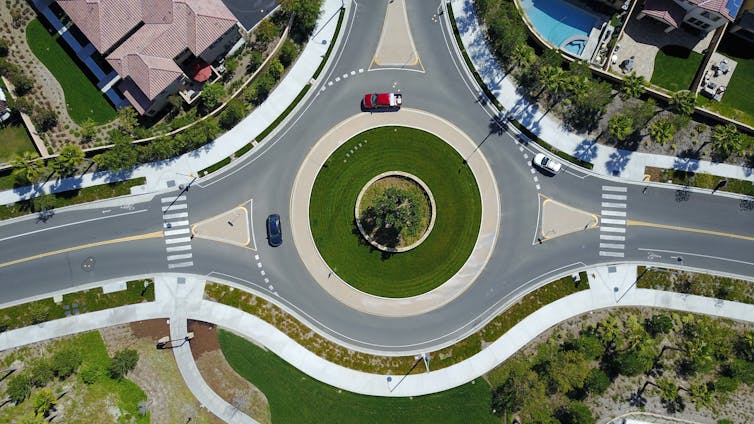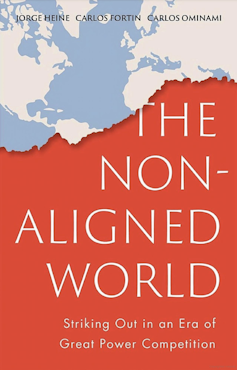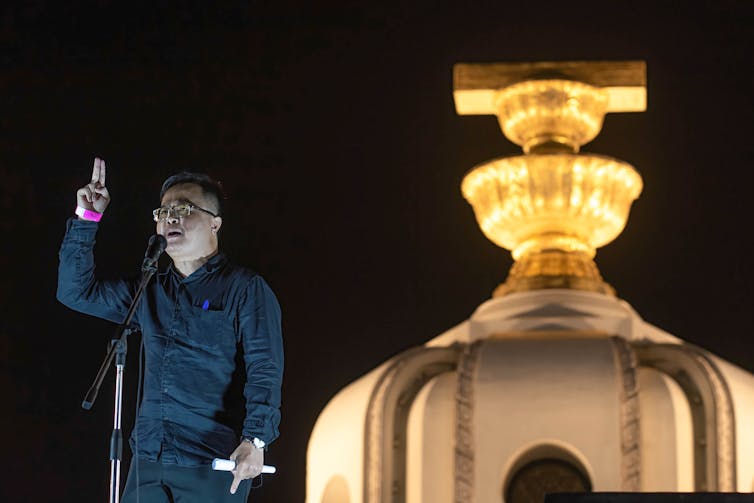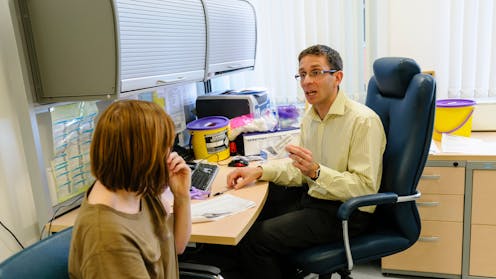Source: The Conversation – in French – By Ariane Plaisance, Research scientist, Université Laval
Les directives médicales anticipées (DMA), qui permettent à une personne de faire connaître ses volontés pour le jour où elle ne serait plus capable de s’exprimer ou de décider pour elle-même, restent encore peu utilisées, tant par les citoyens que par les professionnels de la santé. Pourtant, leur valeur juridique est bien établie.
Cette faible utilisation peut s’expliquer par plusieurs lacunes déjà soulevées par des juristes, que notre équipe a voulu explorer de plus près.
Instaurées le 10 décembre 2015 lors de la mise en vigueur de la Loi concernant les soins de fin de vie (LCSFV), les directives médicales anticipées permettent à une personne majeure et apte à consentir aux soins d’accepter ou de refuser en avance cinq soins médicaux, soit la réanimation cardiorespiratoire, la ventilation assistée par un respirateur, la dialyse, l’alimentation artificielle et l’hydratation artificielle.
Ces directives s’appliquent dans trois circonstances bien précises :
-
En cas de maladie grave et incurable, en fin de vie
-
En situation de coma irréversible ou d’état végétatif permanent
-
En cas de démence avancée sans possibilité d’amélioration.
Les DMA sont complétées par acte notarié ou devant témoins au moyen du formulaire prescrit par le ministre, puis déposées dans un registre administré par la Régie de l’assurance maladie du Québec.
Dans son rapport quinquennal 2018-2023 déposé le 18 février dernier, la Commission sur les soins de fin de vie soulève des questionnements quant au nombre limité de personnes ayant complété des DMA et sur l’effet presque inexistant du régime.
Et si une partie de la réponse se trouvaient dans les écrits juridiques ?
Nous sommes une équipe de recherche interdisciplinaire comprenant des étudiantes à la maîtrise en droit notarial et moi-même, chercheuse spécialisée sur les pratiques de fin de vie. Grâce à un financement de la Chambre des notaires du Québec, nous avons fait une analyse des écrits de spécialistes du droit ayant émis des réserves face au régime des DMA.
À lire aussi :
Emploi et handicap au Québec : un modèle à bout de souffle
L’aptitude à consentir : un fondement légal fragile
Selon Robert P. Kouri, docteur en droit et professeur titulaire à la Faculté de droit de l’Université de Sherbrooke, les dispositions de la loi par rapport à l’aptitude à consentir aux soins présentent une incohérence. Bien que cette aptitude soit présumée, certaines personnes peuvent ne pas être en mesure de l’exercer pleinement.
Le notaire a une obligation de diligence pour vérifier la capacité du signataire, mais ne possède généralement pas l’expertise pour évaluer l’aptitude à consentir aux soins. Quant aux DMA signées devant témoins, aucun mécanisme ne permet de vérifier l’aptitude, malgré la mention préimprimée affirmant que la personne est « majeure et apte ».
Comme le soulignait déjà Me Danielle Chalifoux en 2015, le rôle des témoins se limite à valider la signature, sans exigence d’indépendance ou de vérification de l’aptitude. Si la DMA a été reçue devant notaire et surtout lorsqu’elle a été reçue devant témoins, comment des professionnels de la santé pouvaient s’assurer, des années plus tard, qu’il s’agit bel et bien de l’expression émanant d’une personne légalement apte au moment de la complétion et que ces volontés sont toujours les mêmes, questionne Me Kouri ?
Le consentement éclairé : un idéal souvent irréaliste
La Loi sur les soins de fin de vie part du principe que la personne qui remplit des DMA a reçu toute l’information nécessaire pour prendre une décision éclairée. Or, selon Me Kouri et Me Chalifoux, cette présomption repose sur l’hypothèse d’une consultation avec un professionnel de la santé compétent. Dans les faits, il est peu réaliste de croire que des personnes en bonne santé prennent cette initiative dans un contexte hypothétique de fin de vie.
Il est même irréaliste de croire que des personnes malades aient eu accès à un médecin en mesure de leur expliquer les risques et bénéfices d’accepter ou de refuser les cinq soins contenus dans les DMA. Une telle conversation prend du temps, plus longtemps que la durée d’un seul rendez-vous médical ! Il devient donc difficile d’affirmer honnêtement que la décision est réellement éclairée, d’autant que la volonté exprimée peut évoluer, parfois considérablement, avec le temps.
À lire aussi :
Planification anticipée de l’AMM : les notaires sont-ils prêts à leur nouveau rôle ?
Quand les proches sont exclus des décisions
Dans un texte publié en 2019, Louise Bernier, professeure de droit de la santé à l’Université de Sherbrooke, et Catherine Régis, professeure à la Faculté de droit de l’Université de Montréal, critiquent l’exclusion des proches dans le processus d’application des DMA. Une fois le formulaire entre les mains des professionnels de la santé, la loi n’accorde aucun rôle officiel à la famille pour compléter l’information ou interpréter les volontés exprimées.
Pourtant, les proches sont souvent les mieux placés pour comprendre l’évolution des valeurs ou des préférences de la personne. Les professeures Bernier et Régis dénoncent une conception réductrice et individualiste de l’autonomie, qui fait fi de la dimension relationnelle essentielle dans les soins palliatifs et en fin de vie.
Déjà des milliers d’abonnés à l’infolettre de La Conversation. Et vous ? Abonnez-vous gratuitement à notre infolettre pour mieux comprendre les grands enjeux contemporains.
Un régime à repenser
L’analyse des critiques juridiques permet de mieux comprendre la faible adhésion aux DMA. Les enjeux entourant la présomption d’aptitude, la présomption de consentement éclairé et l’absence de rôle reconnu pour les proches minent la crédibilité et l’efficacité de ce mécanisme légal.
Dans ce contexte, il n’est pas surprenant que les professionnels de la santé puissent hésiter à se fier pleinement aux DMA. De même, la population semble peu encline à recourir à cet instrument, soit par méconnaissance, soit par doute quant à sa capacité réelle de refléter leurs volontés profondes dans des circonstances imprévisibles.
Ces constats invitent à revoir en profondeur ce régime. Peut-être serait-il temps de miser davantage sur les objectifs de soins – un processus évolutif déjà en place depuis 1994, qui consiste à discuter avec la personne et ses proches pour établir les grandes orientations de traitement selon son état de santé, ses volontés et ses valeurs. Ce mécanisme, plus souple, évolutif, et mieux adapté à l’accompagnement clinique, permet aussi l’implication des proches.
![]()
Les auteurs ne travaillent pas, ne conseillent pas, ne possèdent pas de parts, ne reçoivent pas de fonds d’une organisation qui pourrait tirer profit de cet article, et n’ont déclaré aucune autre affiliation que leur organisme de recherche.
– ref. Dix ans après leur entrée en vigueur, les directives de fin de vie sont peu utilisées. Voici pourquoi – https://theconversation.com/dix-ans-apres-leur-entree-en-vigueur-les-directives-de-fin-de-vie-sont-peu-utilisees-voici-pourquoi-257179





















